American Graffiti is a 1973 American coming-of-age comedy film directed and co-written by George Lucas starring Richard Dreyfuss, Ron Howard, Paul Le Mat, Harrison Ford, Charles Martin Smith, Cindy Williams, Candy Clark, Mackenzie Phillips, Bo Hopkins, and Wolfman Jack. Suzanne Somers and Joe Spano also appear in the film.
| American Graffiti | |
|---|---|
Theatrical release poster by Mort Drucker | |
| Directed by | George Lucas |
| Produced by |
|
| Written by |
|
| Starring |
|
| Cinematography |
|
| Edited by |
|
Production company |
|
| Distributed by | Universal Pictures |
Release date |
|
Running time | 112 minutes |
| Country | United States |
| Language | English |
| Budget | $777,000 |
| Box office | $140 million |
Set in Modesto, California, in 1962, the film is a study of the cruising and rock 'n' roll cultures popular among the post–World War II baby boom generation. Through a series of vignettes, the film tells the story of a group of teenagers and their adventures over the course of a single night.
The genesis of American Graffiti was in Lucas' own teenage years in early 1960s Modesto. He was unsuccessful in pitching the concept to financiers and distributors, but found favor at Universal Pictures after United Artists, 20th Century Fox, Columbia Pictures, Metro-Goldwyn-Mayer, Warner Bros., and Paramount Pictures turned him down. Filming was initially set to take place in San Rafael, California, but the production crew was denied permission to shoot beyond a second day.
American Graffiti premiered August 2, 1973, at the Locarno International Film Festival in Switzerland, and was released August 11, 1973 in the United States. The film received widespread critical acclaim and was nominated for the Academy Award for Best Picture. Produced on a $777,000 budget, it has become one of the most profitable films of all time. Since its initial release, American Graffiti has garnered an estimated return of well over $200 million in box office gross and home video sales, not including merchandising.
In 1995, the United States Library of Congress deemed the film "culturally, historically, or aesthetically significant" and selected it for preservation in the National Film Registry. A sequel, More American Graffiti, was released in 1979.
Screenplay
In early September 1962 in Modesto, California, on the last evening of summer vacation, recent high school graduates and longtime friends Curt Henderson and Steve Bolander meet John Milner, the drag-racing king of the town, and Terry "The Toad" Fields in the parking lot of the local Mel's Drive-In diner. Curt and Steve are scheduled to travel the next morning to the Northeastern United States to start college. Despite receiving a $2,000 scholarship from the local Moose Lodge, Curt has second thoughts about leaving Modesto. Steve gives Toad his 1958 Chevrolet Impala to watch while he's away at college until he returns at Christmas. Steve's girlfriend, Laurie, who is also Curt's sister, arrives in her car. Steve suggests to Laurie, who is already glum about him going to college, that they see other people while he is away in order to "strengthen" their relationship. Though not openly upset, she is displeased with his proposal, which affects their interactions the rest of the evening.
Curt accompanies Steve, last year's high school student class president, and Laurie, the current head cheerleader, to the back-to-high-school sock hop. In one story line, Curt is desperate to find a beautiful blonde girl driving a white 1956 Ford Thunderbird that he sees en route to the dance: at a stoplight, she appears to say "I love you" before disappearing around the corner. After leaving the hop, Curt is coerced by a group of greasers ("The Pharaohs") to participate in an initiation rite that involves hooking a chain to a police car and ripping out its back axle. The Pharaohs tell Curt that "The Blonde" is a trophy wife or prostitute, but he refuses to believe either.
Determined to get a message to the blonde girl, Curt drives to the local radio station to ask DJ Wolfman Jack, who is omnipresent on the car radios, to announce a message for the blonde girl. Inside the radio station, Curt encounters a bearded man who tells him that the voice of The Wolfman is pre-taped from afar. The man still accepts the message from Curt to see what he could do. As he’s leaving the station, Curt sees the man talking into the microphone and hears the voice of The Wolfman, and realizes the man is the actual DJ himself.
Sure enough, The Wolfman eventually reads the message on the radio for "The Blonde" to meet Curt or call him at a number which happens to be a telephone booth. Curt waits by the telephone booth and early the next morning, he is awakened by the phone ringing. It turns out to be "The Blonde" who says she knows him and maybe she would see him cruising the coming night. Curt replies probably not, intimating that he decided to go to college and will be leaving that morning.
The Toad, in Steve's car, and John, in his yellow 1932 Ford Deuce Coupé hot rod, cruise the strip of Modesto. Toad, who is normally socially inept with girls, successfully picks up a flirtatious, and somewhat rebellious, girl named Debbie. John inadvertently picks up Carol, an annoying 16-year-old who seems fond of him. Another drag racer, the handsome and arrogant Bob Falfa, is searching out John in order to challenge him to a race.
Steve and Laurie have a series of arguments and make-ups through the evening. They finally split and, as the story lines intertwine, Bob Falfa picks up Laurie in his black 1955 Chevrolet One-Fifty Coupé. Bob finally finds John and goads him into racing. A parade of cars follows them to "Paradise Road" to watch the race. Laurie rides shotgun with Bob as Toad starts the race. As Bob begins taking a lead in the race, he loses control of the car when a front tire blows, and the car plunges into a ditch and rolls over. Steve and John leap out of their cars and rush to the wreck as a dazed Bob and Laurie stagger out of the car before it explodes. Distraught, Laurie grips Steve tightly and begs him not to leave her. He assures her that he will stay in Modesto.
At the airfield in the morning, Curt says goodbye to his parents, his sister Laurie, Steve, John and The Toad. As the plane takes off, Curt, gazing out of the window, sees the white Ford Thunderbird belonging to the mysterious blonde driving down a country road.
An on-screen epilogue reveals that John is killed by a drunk driver in December 1964, Toad is reported missing in action near An L?c in December 1965, Steve is an insurance agent in Modesto, California, and Curt is a writer living in Canada.
- Richard Dreyfuss as Curt Henderson
- Ron Howard as Steve Bolander
- Paul Le Mat as John Milner
- Charles Martin Smith as Terry "The Toad" Fields
- Cindy Williams as Laurie Henderson
- Candy Clark as Debbie Dunham
- Mackenzie Phillips as Carol Morrison
- Wolfman Jack as himself
- Bo Hopkins as Joe Young
- Manuel Padilla, Jr. as Carlos
- Harrison Ford as Bob Falfa
- Lynne Marie Stewart as Bobbie Tucker
- Terry McGovern as Mr. Wolfe
- Kathleen Quinlan as Peg
- Scott Beach as Mr. Gordon
- Susan Richardson as Judy
- Kay Lenz as Jane
- Joe Spano as Vic
- Debralee Scott as Falfa's Girl
- Suzanne Somers as "The Blonde" in the T-Bird
Inspiration
During the production of THX 1138 (1971), producer Francis Ford Coppola challenged co-writer/director George Lucas to write a script that would appeal to mainstream audiences. Lucas embraced the idea, using his early 1960s teenage experiences cruising in Modesto, California. "Cruising was gone, and I felt compelled to document the whole experience and what my generation used as a way of meeting girls," Lucas explained. As he developed the story in his mind, Lucas included his fascination with Wolfman Jack. Lucas had considered doing a documentary about the Wolfman when he attended the USC School of Cinematic Arts, but he ultimately dropped the idea.
Adding in semiautobiographical connotations, Lucas set the story in his hometown of 1962 Modesto. The characters Curt Henderson, John Milner and Terry "The Toad" Fields also represent different stages from his younger life. Curt is modeled after Lucas's personality during USC, while Milner is based on Lucas's teenage street-racing and junior college years, and hot rod enthusiasts he had known from the Kustom Kulture in Modesto. Toad represents Lucas's nerd years as a freshman in high school, specifically his "bad luck" with dating. The filmmaker was also inspired by Federico Fellini's I Vitelloni (1953).
After the financial failure of THX 1138, Lucas wanted the film to act as a release for a world-weary audience:
was about real things that were going on and the problems we're faced with. I realized after making THX that those problems are so real that most of us have to face those things every day, so we're in a constant state of frustration. That just makes us more depressed than we were before. So I made a film where, essentially, we can get rid of some of those frustrations, the feeling that everything seems futile.
United Artists
After Warner Bros. abandoned Lucas's early version of Apocalypse Now (during the post-production of THX 1138), the filmmaker decided to continue developing Another Quiet Night in Modesto, eventually changing its title to American Graffiti. To co-write a 15-page film treatment, Lucas hired Willard Huyck and Gloria Katz, who also added semiautobiographical material to the story. Lucas and producer Gary Kurtz began pitching the American Graffiti treatment to various Hollywood studios and production companies in an attempt to secure the financing needed to expand it into a screenplay, but they were unsuccessful. The potential financiers were concerned that music licensing costs would cause the film to go way over budget. Along with Easy Rider (1969), American Graffiti was one of the first films to eschew a traditional film score and successfully rely instead on synchronizing a series of popular hit songs with individual scenes.
THX 1138 was released in March 1971, and Lucas was offered opportunities to direct Lady Ice, Tommy, or Hair. He turned down those offers, determined to pursue his own projects despite his urgent desire to find another film to direct. During this time, Lucas conceived the idea for a space opera (as yet untitled) which later became the basis for his Star Wars franchise. At the 1971 Cannes Film Festival, THX was chosen for the Directors' Fortnight competition. There, Lucas met David Picker, then president of United Artists, who was intrigued by American Graffiti and Lucas' space opera. Picker decided to give Lucas $10,000 to develop Graffiti as a screenplay.
Lucas planned to spend another five weeks in Europe, and hoped that Huyck and Katz would agree to finish the screenplay by the time he returned, but they were about to start on their own film, Messiah of Evil, so Lucas hired Richard Walter, a colleague from the USC School of Cinematic Arts for the job. Walter was flattered but initially tried to sell Lucas on a different screenplay called Barry and the Persuasions, a story of East Coast teenagers in the late 1950s. Lucas held firm—his was a story about West Coast teenagers in the early 1960s. Walter was paid the $10,000, and he began to expand the Lucas/Huyck/Katz treatment into a screenplay.
Lucas was dismayed when he returned to America in June 1971 and read Walter's script, which was written in the style and tone of an exploitation film, similar to 1967's Hot Rods to Hell. "It was overtly sexual and very fantasy-like, with playing chicken and things that kids didn't really do," Lucas explained. "I wanted something that was more like the way I grew up." Walter's script also had Steve and Laurie going to Nevada to get married without their parents' permission. Walter rewrote the screenplay, but Lucas nevertheless fired him due to their creative differences.
After paying Walter, Lucas had exhausted his development fund from United Artists. He began writing a script, completing his first draft in just three weeks. Drawing upon his large collection of vintage records, Lucas wrote each scene with a particular song in mind as its musical backdrop. The cost of licensing the 75 songs Lucas wanted was one factor in United Artists' ultimate decision to reject the script; the studio also felt it was too experimental—"a musical montage with no characters". United Artists also passed on Star Wars, which Lucas shelved for the time being
Watch movie American Graffiti online on Amazon
Watch movie American Graffiti online
Watch The Movie On PrimeKarzzzz Full HD Movie Download

Majboor Full HD Movie Download
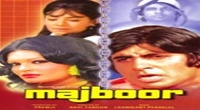
Jeene Do- Let Us Live Full HD Movie Download

Mann Full HD Movie Download

Meharbani (1982) Full HD Movie Download
.jpg)
Humare Tumhare Full HD Movie Download
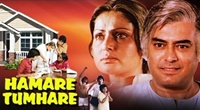
Ganga Jamuna Full HD Movie Download
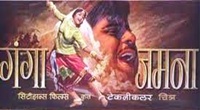
Lok Parlok Full HD Movie Download
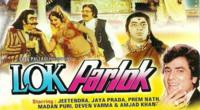
Aandhi (1975) Full HD Movie Download
.jpg)
Dhanare Rakhibu Sapatha Mora Full HD Movie Download
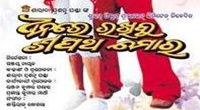
Alibaba and 40 Thieves Full HD Movie Download
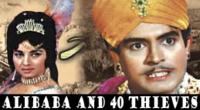
Annabond Full HD Movie Download
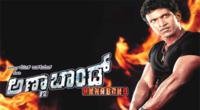
Carnival Full HD Movie Download

We Married Margo Full HD Movie Download
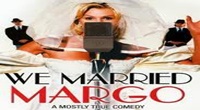
The Green Mile Full HD Movie Download
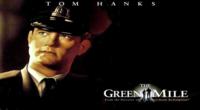
Bharath Bandh Full HD Movie Download
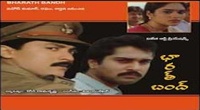
Devi Putrudu Full HD Movie Download
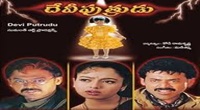
Bangaru Chilaka Full HD Movie Download
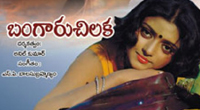
Aithey Entee Full HD Movie Download

Iddaruammayilu Full HD Movie Download
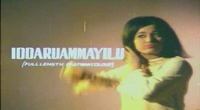
Chak De India Full HD Movie Download
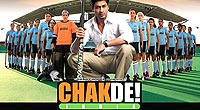
Download latest Movie from bollywood
- 1> baaghi 3
- 2> THE SKY IS PINK MOVIE FULL STORY AND REVIEW
- 3> Luka Chuppi
- 4> TO ALL THE BOYS I’VE LOVED BEFORE
- 5> Kabir Singh
- 6> Street Dancer 3D
- 7> Simmba
- 8> Gone Girl
- 9> The Girl Who Lived
- 10> Ludo
- 11> DILWALE DULHANIA LE JAYENGE
- 12> GUILTY
- 13> The Godfather
- 14> Adventures of Rusty
- 15> Sooryavanshi
- 16> Satyameva Jayate 2
- 17> Thappad
- 18> Bhool Bhulaiyaa 2
- 19> KGFChapter 2
- 20> Mardaani 2
- 21> Pinjar
- 22> Shivaji maharaj
- 23> Ek Villian 2
- 24> Hungama 2
- 25> Divergent
- 26> Mumbai Saga
- 27> The Internship
- 28> HIT (telugu)
- 29> Panga
- 30> The perfect date
- 31> 16 December
- 32> Gopala Gopala (Telugu)
- 33> Brahmastra
- 34> Gangubai Kathiawadi
- 35> Manmadhudu
- 36> Nenu local
- 37> Mahanati
- 38> Shatamanam bavathi
- 39> Lagaan
- 40> After
- 41> MOM
- 42> Shamshera
- 43> Raguvaran BTech
- 44> Khakee
- 45> The villain
- 46> OM
- 47> Mr. perfect
- 48> Bueatifull mind
- 49> Hichki
- 50> Gabbar Singh
- 51> Jogi
- 52> Before Sunrise
- 53> Before Sunset
- 54> Before Midnight
- 55> The Big Bull
- 56> Top Gun: Maverick
- 57> The Purge
- 58> The Sky is Pink
- 59> Laxmmi Bomb
- 60> Sadak 2
- 61> Sufna
- 62> Prithviraj
- 63> PK
- 64> Coolie No 1(2020)
- 65> Black Widow
- 66> Dear Zindagi
- 67> Dil Bechara
- 68> PHIR HERA PHERI
- 69> WAR
- 70> Dostana
- 71> RRR: Roudram Ranam Rudhiram
- 72> Maidan
- 73> Dabbang 3
- 74> Chhalaang
- 75> life as we know it
- 76> SherShaah
- 77> Sandeep Aur Pinky Faraar
- 78> Event Horizon
- 79> 83
- 80> Radhe: Your Most Wanted Bhai
- 81> Gunjan Saxena: The Kargil Girl
- 82> Mr India
- 83> Vivah
- 84> Anokha Bandhan
- 85> Ghost
- 86> Bhoot: Part One - The Haunted Ship
- 87> Haseen Dilruba
- 88> Laal Singh Chaddha
- 89> Qismat
- 90> Rajput
- 91> Drive
- 92> Dil Chahta Hai
- 93> Dil Ki Baazi
- 94> Dil Ka Rishta
- 95> Teesri Manzil
- 96> Dil
- 97> Love Aaj Kal
- 98> Khaali Peeli
- 99> Bunty Aur Babli 2
- 100> Atrangi Re
- 101> Gulabo Sitabo
- 102> Jodi
- 103> Suraj Pe Mangal Bhari
- 104> Deewana
- 105> Attack
- 106> Sardar Udham Singh
- 107> Toofan
- 108> THE LOVEBIRDS
- 109> Jersey
- 110> Ginny Weds Sunny
- 111> Thalaivi
- 112> Shiddat
- 113> Angels vs Zombies
- 114> Koi Mil Gya
- 115> Thank God
- 116> Bhuj: The Pride of India
- 117> Hum Aapke Hain Kaun
- 118> The Platform
- 119> Bird Box
- 120> Roohi Afzana
- 121> Torbaaz
- 122> Nikamma
- 123> World War Z
- 124> Extraction
- 125> Train to Busan
- 126> Life of Pi
- 127> SHAADI MEIN JROOR AANA
- 128> Himmat Aur Mehnat
- 129> To All The Boys: P.S. I Still Love You
- 130> Mimi
- 131> Good Newwz
- 132> Shubh Mangal Zyada Saavdhan
- 133> Raabta
- 134> Harry Potter and the Philosopher's Stone
- 135> Harry Potter and the Chamber of Secrets
- 136> Chhapaak
- 137> War of the Worlds
- 138> Harry Potter and the Prisoner of Azkaban
- 139> Harry Potter and the Goblet of Fire
- 140> MURDER MYSTERY
- 141> Shakuntala Devi
- 142> Bachchan Pandey
- 143> Jayeshbhai Jordar
- 144> Sheer Qorma
- 145> Saina
- 146> 'O' Pushpa I hate tears
- 147> Kedarnath
- 148> MS Dhoni The Untold Story
- 149> Chhichhore
- 150> Badhaai Ho
- 151> Unstoppable
- 152> Oz the Great And Powerful
- 153> The Girl on the Train
- 154> Haathi Mere Saathi 2020
- 155> The Conjuring: The Devil Made Me Do It
- 156> Gandhi Se Pehle Gandhi
- 157> The Song of Scorpions
- 158> Srimanthudu
- 159> Hello Guru Prema Kosame
- 160> Beauty and The Beast
- 161> Black Panther
- 162> Charlie and the Chocolate Factory
- 163> Bole Chudiyan
- 164> Fidaa
- 165> Duvvada Jagannadham
- 166> Bruce Lee: The Fighter
- 167> Hyper
- 168> Yaara
- 169> Red (2020)
- 170> Shivam
- 171> That Is Mahalakshmi
- 172> Nishabdham
- 173> Aashram 2020 web series
- 174> Laxmii
- 175> Mismatched
- 176> STUDENT OF THE YEAR 2
- 177> NAIL POLISH
- 178> Ramprasad Ki Tehrvi
- 179> KAAGAZ
- 180> 12 o Clock
- 181> The Power
- 182> bolo hau
- 183> Tribhanga
- 184> JAMUN
- 185> Madam Chief Minister
- 186> Maasaab
- 187> Aadhaar
- 188> Tanhaji
- 189> Bhaagi 3
- 190> Bhootnath
- 191> MALANG
- 192> Jai Mummy Di
- 193> Haathi Mere Saathi 2021
- 194> Shakeela
- 195> Unpaused
- 196> Annayya
- 197> Vamsoddharakudu
- 198> Mrugaraju
- 199> Narasimha Naidu
- 200> Sankranti
- 201> Manasu Maata Vinadhu
- 202> Anjaane
- 203> Apaharan
- 204> Bachke Rehna Re Baba
- 205> Bewafaa
- 206> Roohi
- 207> Radhe
- 208> Zindagi Khoobsoorat Hai
- 209> Yeh Mohabbat Hai
- 210> Yeh Kya Ho Raha Hai?
- 211> The Tomorrow War
- 212> DehradunDiary
- 213> Meri Shaadi Karaoo
- 214> Matruu Ki Bijlee Ka Mandola
- 215> No One Killed Jesica
- 216> Aag Ka Goola
- 217> Eight Million Dollars
- 218> Three Hundred
- 219> Cats and Dog
- 220> Decoy
- 221> Gold Rush
- 222> You Have Got Mail
- 223> Final Destination three
- 224> Tofan
- 225> Jungle
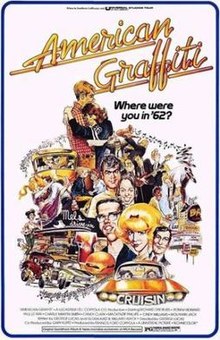 Story of movie American Graffiti :
Story of movie American Graffiti : 